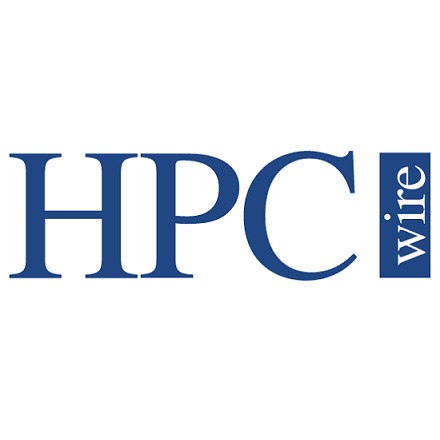
GPU-Powered Data Science Supercharges NASA’s Solar Image Analysis
June 20, 2020
NASA’s Solar Dynamics Observatory carefully watches our Sun for changes, hoping to better understand how changes in the Sun affect Earth and nearby space. The Read more…

Supercomputers Take to the Solar Winds
June 5, 2020
The whims of the solar winds – charged particles flowing from the Sun’s atmosphere – can interfere with systems that are now crucial for modern life, such Read more…

NASA Uses Deep Learning to Monitor Solar Weather
October 17, 2019
Solar flares may be best-known as sci-fi MacGuffins, but those flares – and other space weather – can have serious impacts on not only spacecraft and satell Read more…

Preparing for Solar Storms
August 26, 2013
It may not be possible to prevent devastating space-weather events like solar storms from reaching the earth's surface, but with enough warning, we can prepare for them. Scientists believe that mapping the earth's magnetosphere – the magnetic shield that stops most but not all of these storms – is the first step. Read more…

Univa: Filling a Gap Left by Sun
July 16, 2012
Sun Microsystems was an innovator and a leader in high performance computing from the onset of SMP-based servers and powerful workstations. That began to change with the introduction of “LINTEL”- clusters (Linux and Intel X86 servers) over a decade ago. While hindsight can indicate that mistakes - or misjudgments - were clearly made, perhaps on par with Research in Motion’s co-CEO’s now famous dismissal of the iPhone. Read more…

The Weekly Top Five – 04/28/2011
April 28, 2011
The Weekly Top Five features the five biggest HPC stories of the week, condensed for your reading pleasure. This week, we cover the TeraGrid effort to support the Japanese research community; NNSA's 'Supercomputing Week' coverage; Mellanox's new double-duty switch silicon; Platform's latest Symphony; and the Oracle Sun Server-based Sandia Red Sky/Red Mesa supercomputer upgrades. Read more…

Univa Rescues Grid Engine From Oracle
January 18, 2011
Univa announced today it would be acquiring the Sun/Oracle Grid Engine engineering expertise from Oracle Corp. In doing so, the company will take over stewardship of the popular open source workload manager, which, in the space of two years, has passed through three companies: Sun Microsystems, Oracle, and now Univa. Its new owners plan to support existing deployments of Grid Engine as well as develop a commercial version with added capabilities. Read more…

South Africa’s HPC Center Tames Its ‘Zoo of Architectures’
April 13, 2010
The 21st century has seen a plethora of supercomputing centers sprouting up across the globe. While the US, Western Europe, and Japan are still the dominant HPC territories, rapidly developing countries such as China, India, Brazil, Russia and Saudi Arabia are quickly ramping up their HPC infrastructures. Of all the regions, though, Africa is still mostly an HPC desert. But in Cape Town, South Africa, the three-year-old Center for High Performance Computing (CHPC) aims to change all that. Read more…

- Click Here for More Headlines

Whitepaper
Transforming Industrial and Automotive Manufacturing
In this era, expansion in digital infrastructure capacity is inevitable. Parallel to this, climate change consciousness is also rising, making sustainability a mandatory part of the organization’s functioning. As computing workloads such as AI and HPC continue to surge, so does the energy consumption, posing environmental woes. IT departments within organizations have a crucial role in combating this challenge. They can significantly drive sustainable practices by influencing newer technologies and process adoption that aid in mitigating the effects of climate change.
While buying more sustainable IT solutions is an option, partnering with IT solutions providers, such and Lenovo and Intel, who are committed to sustainability and aiding customers in executing sustainability strategies is likely to be more impactful.
Learn how Lenovo and Intel, through their partnership, are strongly positioned to address this need with their innovations driving energy efficiency and environmental stewardship.
Download Now
Sponsored by Lenovo
Whitepaper
How Direct Liquid Cooling Improves Data Center Energy Efficiency
Data centers are experiencing increasing power consumption, space constraints and cooling demands due to the unprecedented computing power required by today’s chips and servers. HVAC cooling systems consume approximately 40% of a data center’s electricity. These systems traditionally use air conditioning, air handling and fans to cool the data center facility and IT equipment, ultimately resulting in high energy consumption and high carbon emissions. Data centers are moving to direct liquid cooled (DLC) systems to improve cooling efficiency thus lowering their PUE, operating expenses (OPEX) and carbon footprint.
This paper describes how CoolIT Systems (CoolIT) meets the need for improved energy efficiency in data centers and includes case studies that show how CoolIT’s DLC solutions improve energy efficiency, increase rack density, lower OPEX, and enable sustainability programs. CoolIT is the global market and innovation leader in scalable DLC solutions for the world’s most demanding computing environments. CoolIT’s end-to-end solutions meet the rising demand in cooling and the rising demand for energy efficiency.
Download Now
Sponsored by CoolIT
Advanced Scale Career Development & Workforce Enhancement Center
Featured Advanced Scale Jobs:
HPCwire Resource Library
HPCwire Product Showcase
© 2024 HPCwire. All Rights Reserved. A Tabor Communications Publication
HPCwire is a registered trademark of Tabor Communications, Inc. Use of this site is governed by our Terms of Use and Privacy Policy.
Reproduction in whole or in part in any form or medium without express written permission of Tabor Communications, Inc. is prohibited.
























